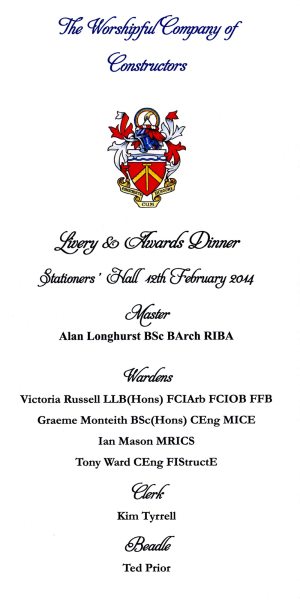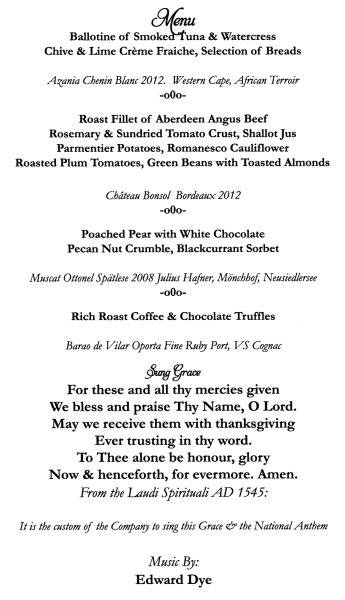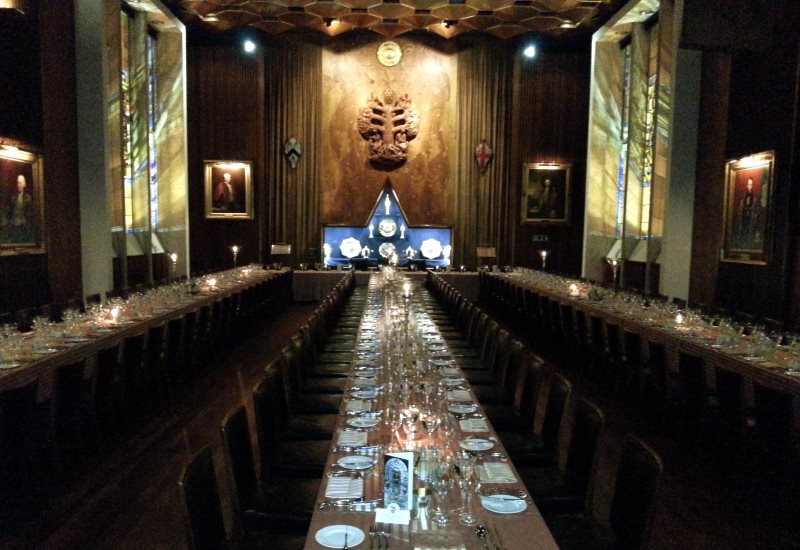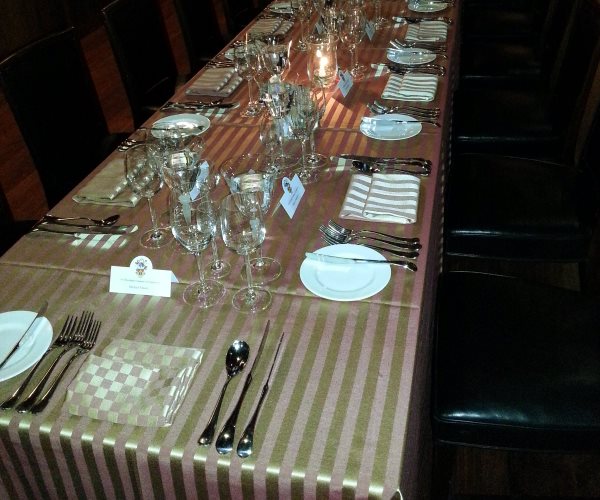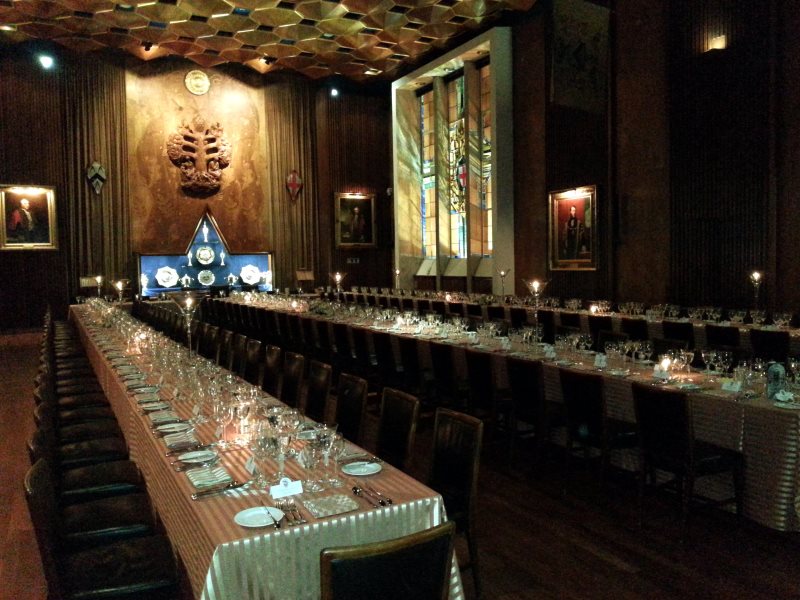
Tel: 020 7620 1818 email: cookandbutler@btconnect.com
The Worshipful Company of Constructors
www.constructorscompany.co.uk
July Court Lunch
July 4th, Trinity House, London
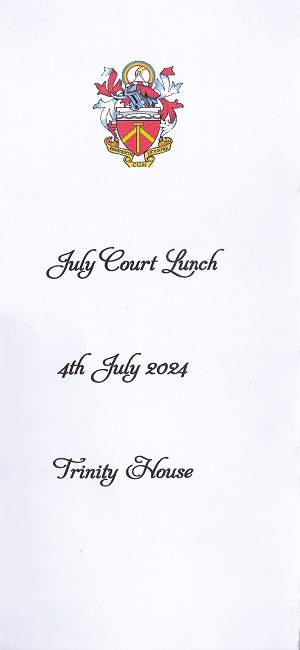

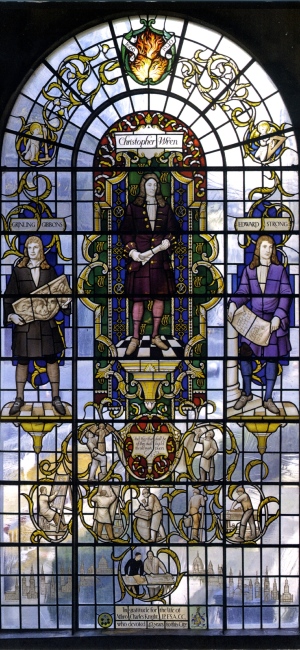
Installation Dinner
October 2015, Carpenters Hall, London
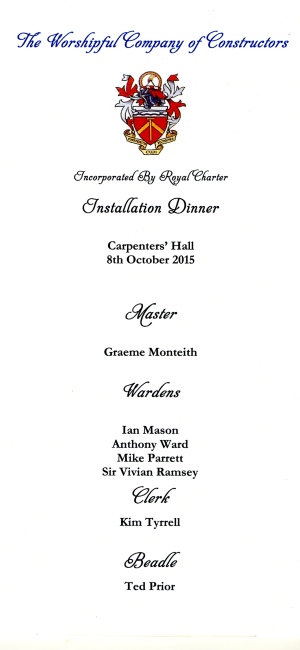
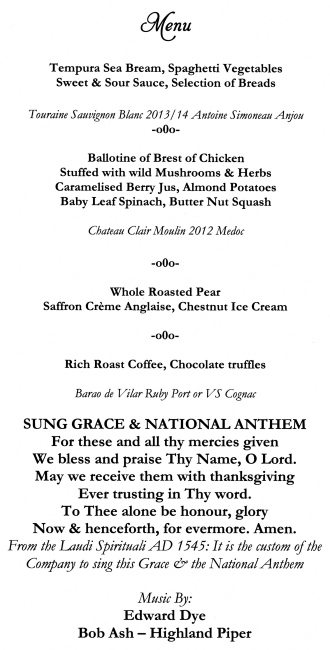

Sir Christopher Wren
Sir Christopher Wren has, more than any other individual,
influenced the built environment of the City of London. An Engineer,
Architect, Surveyor and Builder, he epitomises the multidisciplinary nature
of the construction industry, and the Constructors' Company.
Born in 1632, Wren was a leading scientific thinker of his day, highly
regarded by Newton and Pascal, and was a founding Fellow of the Royal
Society serving as its President in 1680. His first major project, in 1663,
was to design a chapel at Pembroke College Cambridge; it included a dome!
Wren was presented with his greatest opportunity in 1666 from the disaster
that was the Great Fire of London. He was appointed Surveyor of St Paul's
Cathedral in 1669, and Surveyor for Rebuilding City Churches the following
year.
The Wren Window of St Lawrence Jewry next Guildhall depicts Wren flanked by
his Master Carver and Master Mason. This, one of the fifty-one churches he
designed and built following the Great Fire of London, was one of the most
expensive. As the official church of the Corporation of London many splendid
occasions are enjoyed here, and it is the Guild church of twelve Livery
Companies, including the Constructors.
Wren was knighted in 1673, and numerous commissions followed including the
Royal Observatory and Naval Hospital at Greenwich, and the Royal Hospital
Chelsea, as well as the appointment as Surveyor of Westminster Abbey, which
he held until his death in 1723. He is buried in what is considered his
greatest work, St Paul's Cathedral. The plain stone under the south aisle
has a Latin inscription reproduced in black marble under the dome which
translates as:
"Here in its foundations lies the architect of
this church and city, Christopher Wren, who
lived beyond ninety years, not for profit but
for the public good. Reader, if you seek his
monument — look around you."
A fitting epitaph for a great Constructor.

Livery & Awards Dinner
February 2014, Stationers' Hall, London
Installation Dinner
October 2013, Carpenters Hall, London
Livery & Awards Dinner
February 2013, Stationers' Hall, London
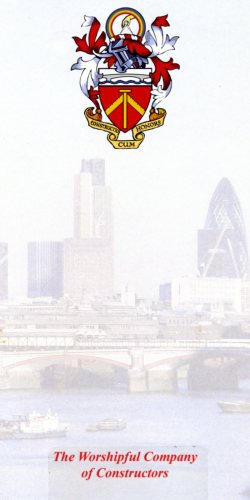
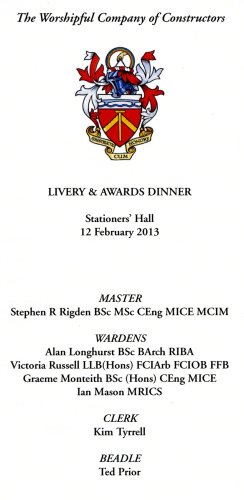
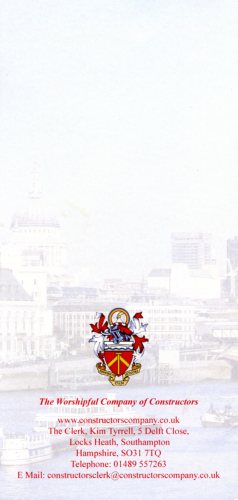

![]()
The Worshipful Company of Constructors was founded as the Company of
Builders in 1976. The City of London recognised “The Company of Builders” as
a Company without Livery on 11th June 1985. In the process of becoming a
full Livery Company, in order to avoid conflict with existing Livery
Companies, the name was changed. Thus, on 12th June 1990, a Grant of Livery
was made to “The Worshipful Company of Constructors”, and Letters Patent
were awarded on 20th September 1990. The final chapter in the Company’s
history to date relates to the grant of a Royal Charter of Incorporation.
The Privy Council announced Her Majesty’s grant of a Royal Charter to the
Company on 10th February 2010. On 14th April 2011 the Royal Charter was
formally presented to the Company at Merchant Taylors' Hall on behalf of Her
Majesty by His Royal Highness The Duke of Gloucester.
Activities & Responsibilities
The Worshipful Company of Constructors exists in order to bring together all
of the professions involved in the construction industry in all its facets,
to support scholarship within construction, to provide its members with good
fellowship, and to support charities related to the construction industry
and the City.
Scholarships and Awards
To mark the grant of our Royal Charter in 2010, the Company established
The Worshipful C of Constructors' Royal Charter Awards. These consist of
a biennial award for excellence in construction, which may be awarded to an
individual, an organisation, or a specific project, and a biennial travel
bursary to an outstanding young construction professional. The Company also
manages five scholarship schemes and two award schemes in association with
various professional institutions and other organisations, and presents two
prizes to students of London Southbank University.
![]()
